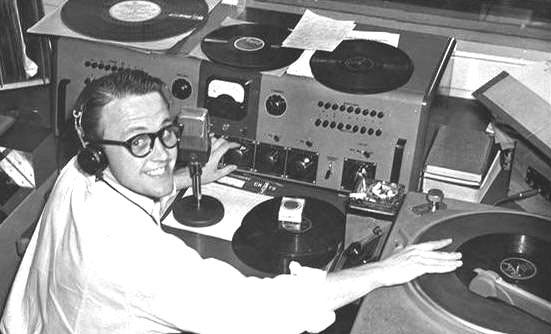41 major record labels of the 1950s
Crooners of the 50s | Synonym The crooner style, developed in the 1920s, is still prevalent. Intended to give singers a better radio sound, the style uses sliding pitches, slight trills and long sustained notes. "Sweet swing" bandleaders of the 1930s, including Artie Shaw, Eddy Duchin and Glenn Miller, added crooners. ... Top 10 major Record Labels - Medium The American record label has signed some of the world's top earning artists such as James Blunt, David Guetta, Bruno Mars, Kelly Clarkson, Wiz Khalifa, Charlie Puth, Skrillex, Marina and the...
The 50 most collectable records of the 1950s Norgran was another of the pre-Verve labels founded by Norman Granz. The album artwork is by David Stone Martin, collectable in his own right. Otto Luening & Vladimir Ussachevsky Tape Recorder Music (Gene Bruck Enterprises LP, 1955) Listen / Buy

Major record labels of the 1950s
The Independent Record Labels of the 1950's and 1960's Originally, Independent music referred to bands or artists who performed and/or produced music autonomously and without the commercial rules and restrictions associated with major record labels (Hale, 2014). Throughout the years Independent music has evolved into a broader meaning (America Rocks, 2016). The 1950's. The Independent Record Companies - History of Rock Sun Records played an important part in the development of rock 'n' roll and country music, working with artists such as Elvis Presley, Carl Perkins, Johnny Cash, Jerry Lee Lewis, Roy Orbison, and Charlie Rich. These independent labels usually aimed their releases at a small but loyal audience. Independent record label - Wikipedia An independent record label (or indie label) is a record label that operates without the funding or distribution of major record labels; they are a type of small- to medium-sized enterprise, or SME.The labels and artists are often represented by trade associations in their country or region, which in turn are represented by the international trade body, the Worldwide Independent Network (WIN).
Major record labels of the 1950s. Chapter 12 - Chapter 12 The face of rock and roll music... - Course Hero Fabian Forte Major record labels faced a serious problem at the end of the 1950s. Throughout the decade, they had considered rock and roll to be trashy, nothing more than a passing fad that would eventually go away on its own. Since major labels did not pick up many rock and roll artists, most musicians recorded The Independent Record Labels of the 1950's and 1960's Order custom essay The Independent Record Labels of the 1950's and 1960's with free plagiarism report GET ORIGINAL PAPER They found a signature sound in the electric guitar of Muddy Waters. Besides Muddy Watters, their rostser included Chuck Berry, Bo Diddley, Willie Nixon, Etta James, Little Walter, Billie Stewart, and Howlin' Wolf. Category:Record labels established in 1950 - Wikipedia Categories: Record labels established in the 1950s. Entertainment companies established in 1950. Mass media companies established in 1950. 1950 in music. Record labels by year of establishment. Hidden categories: Navseasoncats year and decade. The Recording Music Industry: The Structure Of The... | Bartleby The recording music business was originally dominated by record labels beginning in the 1950s. According to Aspray, the original structure of the recording industry stood as an oligopoly controlled by the six major record labels: Warner Music Group (WMG), Electrical and Music Industries Group (EMI), Bertelsmann Music Group (BMG), Universal Music Group (UMG), Sony Music Group (SMG) and PolyGram ...
50sPopMusic.com Rhythm & blues recordings and country & western songs did not enter into mainstream popular music until the mid-fifties, and the timing coincided with the birth of rock 'n' roll. 'Pop' music records were usually released by one of the six major labels: Capitol, Columbia, Decca, MGM, Mercury, and RCA Victor. The Major Record Companies - History of Rock The most important were New York's Atlantic Records, Chicago's Chess Records, Cincinnati's King Records, Los Angeles Specialty Records and Memphis' Sun Records. It wouldn't be until the mid-fifties that the Majors would discover the error of their ways. Founding, Subsidaries, Executives, Artists, etc ASCAP and BMI Independent Record Labels | History | Play Alone Records Established in the 1950s in Memphis, Tennessee, Sun Records signed artists considered to be out of the mainstream. It's funny- to think of country and rock music as "unconventional" styles. They were, however, and were able to get their footing because of the indie philosophy. For the indie scene, a niche was the gateway to success. History of Record Labels and the Music Industry by Alex Cosper by Alex Cosper. Introduction 1900s 1910s 1920s 1930s 1940s 1950s 1960s 1970s 1980s 1990s 2000s. The beginning of the recording industry is often thought of as Thomas Edison's patent on phonograph technology in the late 19th century. While rudimentary sound capturing experiments began in the early 1800s with tuning forks, these soundwaves were ...
Music Industry History 1950s - Playlist Research - In the early 1950s the big five major record labels were Columbia, RCA Victor, Decca, Capitol and Mercury. Capitol had risen to being the fourth biggest label in 1955 when EMI, the biggest UK record operation, bought Capitol for $8.5 million. the market share for major labels fell dramatically. Record labels emerging during the 1950s places like - Course Hero elements in terms of music performed by teenagers, for teenagers to a great extent. But of course, doing it within the division of labor system. The second part of this week's lecture, talked about technology, in particular, the introduction of reel to reel tape, and how that changes the industry fundamentally in the 1950s, because all of a sudden the costs of opening a recording studio have ... The Independent Record Labels of the 1950's and 1960's Eric Eller. Throughout the 1950's and 1960's, a wave of new musical movements by independent record labels and new artists emerged in the United States. This movement is captured in the stories of those label creators and owners, and in the turbulent journey through their successes and failures. The first emergence was fueled by multiple ... What's in a Label: A Look at Atlantic Records | Discogs The Look. Like most major record companies, Atlantic has used a vast assortment of logos, label colors, and designs during its decades-long history, beginning with a stylized capital "A" underlining the remaining letters with its crossbar, framed in black against red, yellow, and other background tones. An alternate, less aggressive logo ...

😎 50s record labels. Essay on The Independent Record Labels of the 1950’s and 1960’s. 2019-03-06
1950s Rock and Roll: A Decade of Music That Changed the World - Rolling ... The most durable (read "overused") bass riff in Fifties rock & roll, as exemplified by Fats Domino's "Blue Monday" or Lloyd Price's and Elvis Presley's "Lawdy Miss Clawdy," had been pinched by Dave...
The Independent Labels - University of Idaho significant to rock music. Some of the most important labels were Atlantic, Chess, Elektra, Imperial, King, Specialty, and Sun Records, followed later in the 1950s by Stax and Motown. Atlantic Records was established in 1947 by Ahmet Ertegun and Herb Abramson and focused on recording black rhythm and blues artists. Among the early
Chapter 5: The Reaction to Rock 'n' Roll Flashcards - Quizlet They failed to adopt competitive strategies when independent record companies began to surge. Which of the following was true of records in the 1950s? They involved altered stylistic elements and often doctored lyrics. Cover records most often involved Major label white artists covering independent black artists
Record labels that rocked our world - The Independent Blue Note's golden age was in the 1950s and 1960s, when it released records by the cream of US jazz musicians and composers: trumpeter Lee Morgan, pianist Sonny Clark and tenor sax player Dexter...
How the Big Four Record Labels Became the Big Three The Big Three record labels are: Sony BMG Universal Music Group Warner Music Group These labels can make up almost 80% of the music market or even more—depending on the year—although it was estimated to be about two-thirds in 2016. How Artists Are Affected
Record Labels - What Are and How to Contact Them - Intacto.com In the old days, record labels were the most important part of the music industry from the 1950s to the 1980s. They were responsible for promoting and getting their artists in magazines and radios. ... Major Record Labels in the USA. Warner Music Group (WMG) is an American multinational entertainment and record label conglomerate headquartered ...
Independent record labels and producers | Britannica During the late 1960s and early '70s several labels were launched by the managers of artists, including Andrew Oldham's Immediate, Chris Wright and Terry Ellis's Chrysalis, and Robert Stigwood's RSO, all in Great Britain, as well as David Geffen and Elliott Roberts's Asylum in Los Angeles. Among many labels set up by producers, Kenny ...
History of R&R CH 2 Flashcards | Quizlet The emergence of rock and roll in the 1950s can be attributed to the relationship between DJs and indie record labels. All of the following are elements of Chuck Berry's music EXCEPT songs geared toward adult black listeners. Which of the following was a trademark of Little Richard's music? maniacal singing Elvis's first single for RCA was
The Rise and Fall of Record Labels - Claremont Colleges 1950s when it became cost effective to do so. The 1950s saw Decca Records, RCA, and Columbia all become major players in the recorded music industry 9. Many more record labels entered the scene in the 1950s but eventually the record labels began to merge and consolidate to form a few corporate giants.
Independent record label - Wikipedia An independent record label (or indie label) is a record label that operates without the funding or distribution of major record labels; they are a type of small- to medium-sized enterprise, or SME.The labels and artists are often represented by trade associations in their country or region, which in turn are represented by the international trade body, the Worldwide Independent Network (WIN).
The Independent Record Companies - History of Rock Sun Records played an important part in the development of rock 'n' roll and country music, working with artists such as Elvis Presley, Carl Perkins, Johnny Cash, Jerry Lee Lewis, Roy Orbison, and Charlie Rich. These independent labels usually aimed their releases at a small but loyal audience.
The Independent Record Labels of the 1950's and 1960's Originally, Independent music referred to bands or artists who performed and/or produced music autonomously and without the commercial rules and restrictions associated with major record labels (Hale, 2014). Throughout the years Independent music has evolved into a broader meaning (America Rocks, 2016). The 1950's.

Keuffel & Esser Co. - A manufacturer of drafting, surveying, architectural and engineering tools ...









Post a Comment for "41 major record labels of the 1950s"